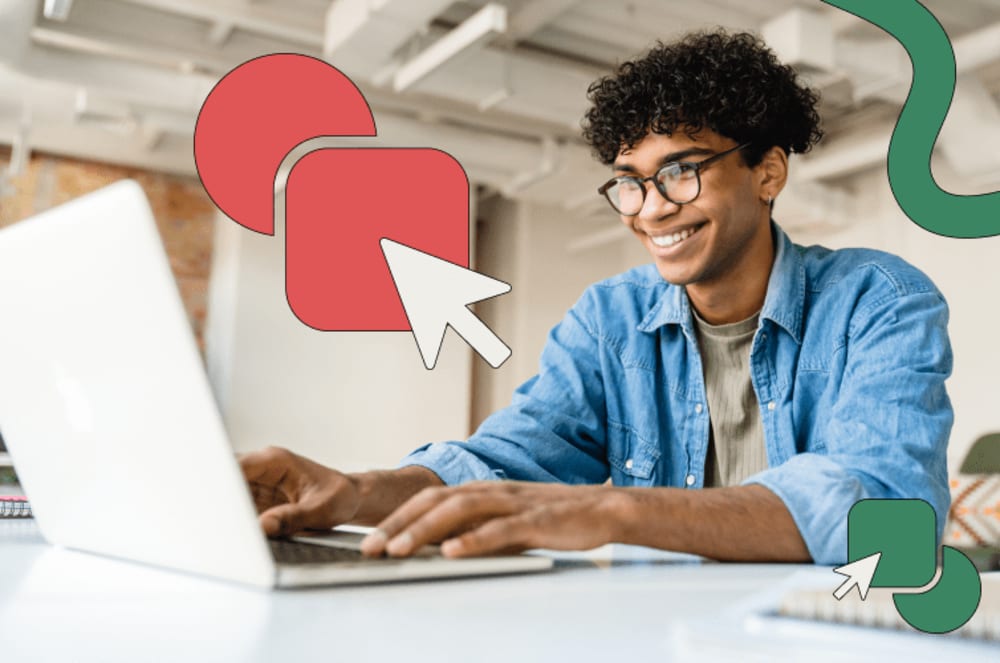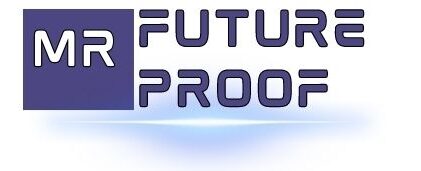Gamification in personalized education means customizing learning experiences. This enhances student engagement, motivation, and learning outcomes.
Gamification has been increasingly popular in education due to its ability to provide personalized and engaging learning experiences. It involves using game elements such as points, badges, leaderboards, and rewards to motivate students. By applying these game mechanics, personalized learning becomes more fun and interactive for students, allowing them to take control of their own learning experience.
The essence of gamification is simple: customizing learning experiences while keeping students engaged and motivated. This approach enhances learning outcomes and improves skills that translate into real-world applications. In this article, we will delve into the world of gamification in personalized education and explore its various benefits and drawbacks.

Credit: www.go1.com
Gamification For Personalized Education
Define Gamification In Education
Gamification refers to the process of adding elements of gaming to non-gaming contexts, such as education. In the field of education, gamification incorporates game design elements, such as points, leaderboards, and rewards systems, into learning experiences. Gamification aims to make education more engaging, interesting and fun, by taking advantage of the intrinsic human motivation to play games.
Explain How Gamification Can Make Learning Fun And Engaging
Gamification has been shown to make learning more compelling and enjoyable for both children and adults. It can create an immersive and interactive learning environment that motivates students to participate actively and explore the learning material. It can also help students develop critical thinking and decision-making skills in a safe and fun environment.
In addition, gamification can promote healthy competition among learners, which fosters motivation, engagement and a sense of achievement.
- Gamification can create a sense of challenge and competition among learners.
- It instills a sense of achievement and encourages students to take more ownership over their results
- It makes learning more interactive, thus increasing learners’ engagement and attention
- It can motivate learners to acquire new skill sets that they may not otherwise be interested in
Discuss Why Gamification Can Increase Motivation And Retention
Gamification in education can improve the motivation and retention of students in a variety of ways. First, it gets students invested in their learning by increasing their interest and intrinsic motivation. Second, it provides immediate feedback, which encourages the learner to continue working on a task until it is completed.
Third, gamification provides opportunities for learners to practice and apply their skills in a safe and low-pressure environment, which helps them develop confidence in their abilities.
- Gamification can increase learners’ intrinsic motivation, inspiring them to persist and make noticeable progress
- It creates a sense of achievement while also providing a low-stress environment to practice and make mistakes
- Gamification is associated with the release of the neurotransmitter dopamine, which is believed to increase feelings of pleasure and motivation
- The added game-like elements such as leaderboards, badges, and other types of rewards create stronger memories of what is being learned.
Personalization In Education
Gamification For Personalized Education: Customizing Learning Experiences
Gamification is currently making a shift in the education sector, especially in customizing learning experiences. Personalized education is what most educationalists are calling for to enhance student learning experiences. This approach involves catering to the needs of individual students by modifying the learning experience in ways that are tailored to their learning styles, interests, and pace.
By so doing, the students become more invested in their education and take ownership over their learning process.
Explain What Personalized Education Is
Personalized education is an approach that seeks to customize the student’s learning experience by acknowledging their unique learning styles, interests, and environments. It involves providing tailor-made content, assignments, and assessments that fit the student’s learning preferences. Personalized education also encompasses the provision of opportunities for students to learn at their pace, which helps them understand the concept better.
Discuss The Benefits Of Personalized Education
Personalized education provides a conducive environment that facilitates a student to learn at their pace without pressure from fellow learners. This approach enhances a student’s ability to comprehend the subject being taught, which improves their performance. Some benefits of personalized education include:
- It enhances student engagement in the learning process
- It increases the motivation to learn
- It improves student performance by targeting their unique learning styles and interests
- It creates a sense of ownership over the learning process
Mention How Personalized Education Can Improve Student Outcomes
Personalized education is an excellent approach to improve student outcomes because it caters to individual student’s needs. Students can learn at their pace, which eliminates the anxiety of being left behind. This approach also enhances student engagement in the learning process because they feel that they have control over their learning.
When students are more engaged, they tend to perform well in school. Additionally, personalized education offers students learning opportunities and challenges that fit their unique abilities and aspirations. As a result, students gain confidence in their ability to learn, which makes them more successful in academic and non-academic spheres of their life.
Personalized education is an innovative approach to enhance student learning experiences. By providing a customized, engaging, and relevant curriculum, it enables students to take ownership of their learning and improve their academic performance. In this regard, gamification plays a critical role in customizing learning experiences.
Gamification And Personalization: Best Practices
Gamification For Personalized Education: Customizing Learning Experiences
Gamification has become a buzzword in the world of personalized education. It refers to the use of game-like elements such as points, badges, and leaderboards to make education more fun and engaging. The use of gamification in personalized learning goes beyond regular competitions or rewards.
Instead, it’s used to create targeted learning experiences that are customized to a student’s unique needs and preferences. Here are some best practices for incorporating gamification into personalized education.
Discuss The Importance Of Personalizing Gamified Experiences
Personalized learning can improve student engagement and retention, leading to better educational outcomes. Here are some reasons why personalizing gamified experiences is so important:
- It enables students to learn at their own pace, addressing their individual needs.
- It allows students to take ownership of their learning, leading to greater motivation and commitment.
- It helps students stay engaged by presenting learning materials in the context of their interests and preferences.
Explain How To Personalize Gamified Experiences Effectively
Personalizing gamified experiences starts with understanding your students’ needs and preferences. It requires:
- Assessing student learning needs and creating a personalized learning plan.
- Creating content that aligns with student interests.
- Designing game mechanics that help students achieve their learning goals.
- Providing real-time feedback that helps students track their progress and adjust their learning strategies.
Highlight Some Best Practices For Incorporating Gamification Into Personalized Education
If you want to incorporate gamification into personalized education, keep these best practices in mind:
- Start with a clear learning objective and align game mechanics with those goals.
- Use a variety of game mechanics to keep students engaged, like points, badges, and leaderboards.
- Create a sense of community by encouraging students to work together and share their knowledge.
- Make sure the game mechanics are well-designed and aligned with your curriculum.
- Provide meaningful feedback that allows students to track their progress and adjust their learning strategies.
To effectively incorporate gamification into personalized education, it’s essential to start with a clear learning objective and align game mechanics with those goals. Also, use a variety of game mechanics to keep students engaged, create a sense of community by encouraging students to work together, and provide timely and meaningful feedback.
Personalized gamified experiences can be a powerful tool to engage students and improve educational outcomes.
Applications Of Gamification In Education
Gamification is the use of game mechanics and design in non-game contexts, such as education, to motivate and engage learners. In recent years, gamification has emerged as a popular approach for creating personalized and immersive learning experiences. In this blog post, we will discuss the various applications of gamification in education and its impact on student outcomes.
However, it is important to note the potential limitations of gamification as well.
Provide Examples Of Gamification In Education
Gamification has found many applications in education. Here are some examples:
- Duolingo: Language learning app duolingo uses gamification to engage users in learning a new language. It employs a system of rewards, achievements, and progress bars to keep learners motivated and track their progress.
- Classcraft: Classcraft is a role-playing game that transforms the classroom into an immersive, collaborative learning experience. In this game, students form teams and earn points by completing tasks, helping each other, and demonstrating positive behaviors.
- Kahoot! : Kahoot! Is a game-based learning platform that allows teachers to create interactive quizzes and games. It engages students in the learning process and helps teachers evaluate student comprehension in real-time.
Discuss The Impact Of Gamification On Student Outcomes
Gamification has been found to have a positive impact on student outcomes. Here are some ways gamification improves student performance:
- Increased student engagement: Gamification makes learning fun and engaging, which leads to increased student motivation and participation.
- Improved learning outcomes: Gamified learning experiences have been shown to improve student retention and comprehension of material.
- Boosted student confidence: By making learning more accessible and enjoyable, gamification can boost student confidence and improve their attitude towards school.
Mention The Potential Limitations Of Gamification In Education
While gamification has many benefits, it is important to be aware of its potential limitations. Here are some potential drawbacks:
- Superficial motivation: Gamification can create superficial motivation in students who are only engaged with the content because of the game mechanics, rather than a genuine interest in the subject matter.
- Overemphasis on competition: Some gamified learning experiences can create a culture of competition, which can be detrimental to students’ social-emotional development.
- Limited applicability: Gamification may not be suitable for all learning contexts, as it may not align with the learning objectives or topic at hand.
Gamification has the potential to revolutionize education by providing personalized and engaging learning experiences for all students. However, the benefits and limitations of gamification must be carefully considered before implementing gamified learning experiences in the classroom.
Frequently Asked Questions Of Gamification For Personalized Education: Customizing Learning Experiences
What Is Gamification In Education?
Gamification is the use of game design and mechanics to engage and motivate learners.
How Can Gamification Personalize Learning Experiences?
Gamification can personalize learning experiences by tailoring them to the individual student’s needs and preferences.
What Are The Benefits Of Incorporating Gamification Into Education?
Gamification can increase student engagement, motivation, and retention while also providing valuable feedback for educators to improve their teaching methods.
Conclusion
It’s crystal clear that personalized education and gamification go hand in hand. By customizing learning experiences with gamification techniques, students are more engaged, motivated, and have a better grip on the material. Various studies have shown that gamification leads to better learning outcomes and positive academic results.
With the shift towards more interactive and customized learning experiences, gamification is at the forefront of education innovation. It’s a creative and enjoyable way for students to learn and retain information, leading to more successful outcomes. Additionally, gamification is not a one-size-fits-all solution, as every student has different learning styles and interests.
Teachers should adapt gamification to cater to students’ needs and make learning fun for everyone. Gamification is a fresh and engaging approach to personalized education, and by including it in learning strategies, we can transform the educational landscape for generations to come.

